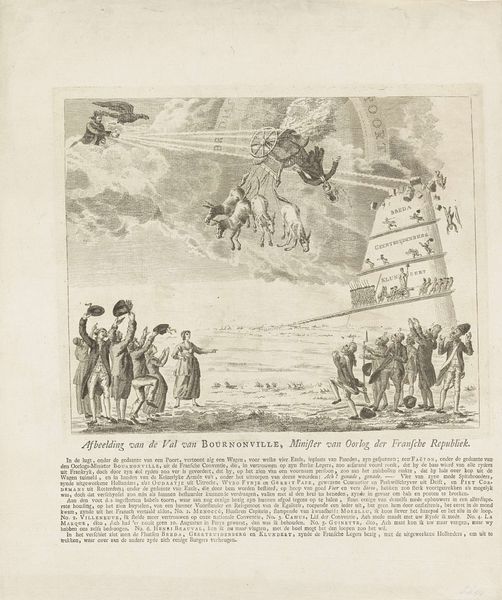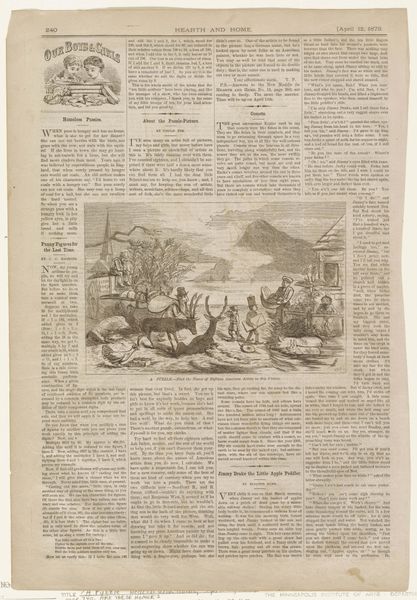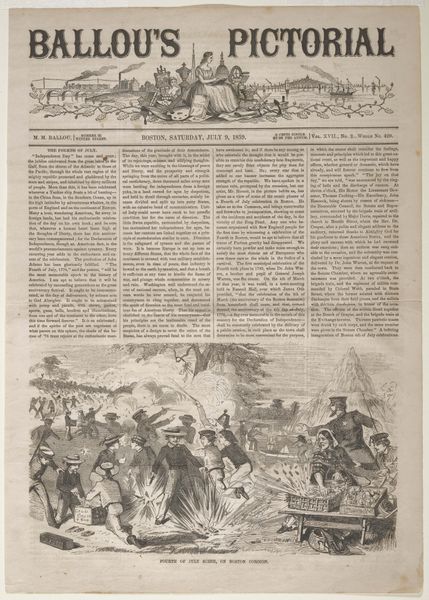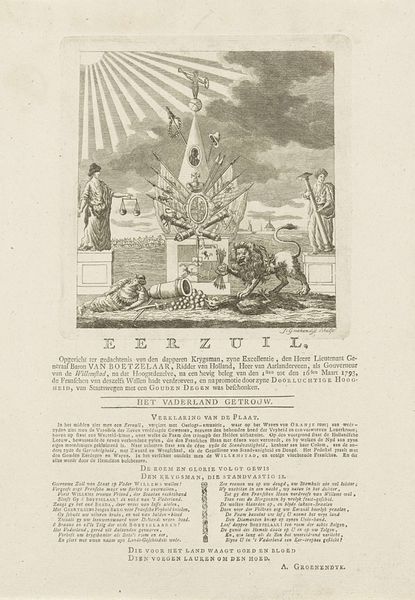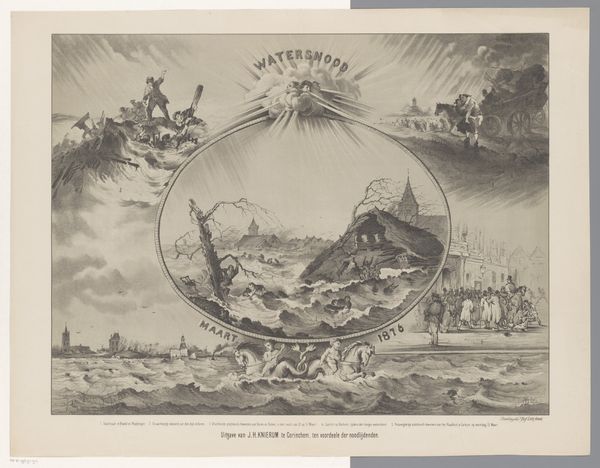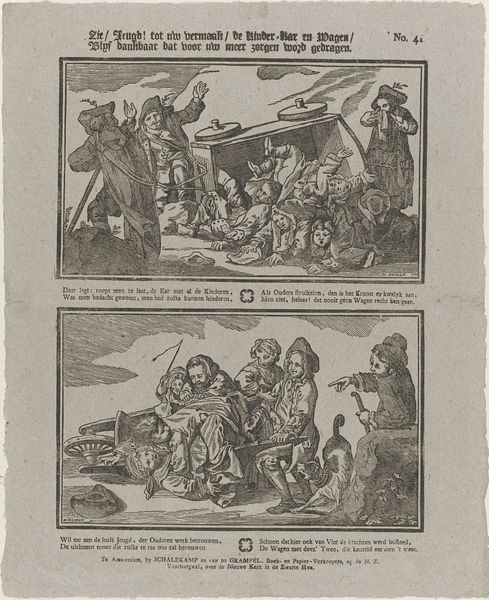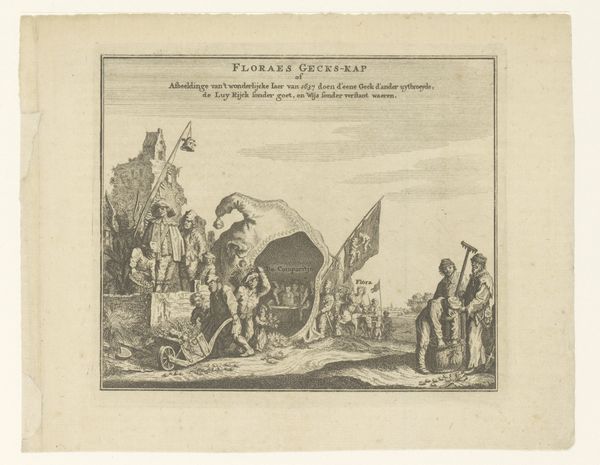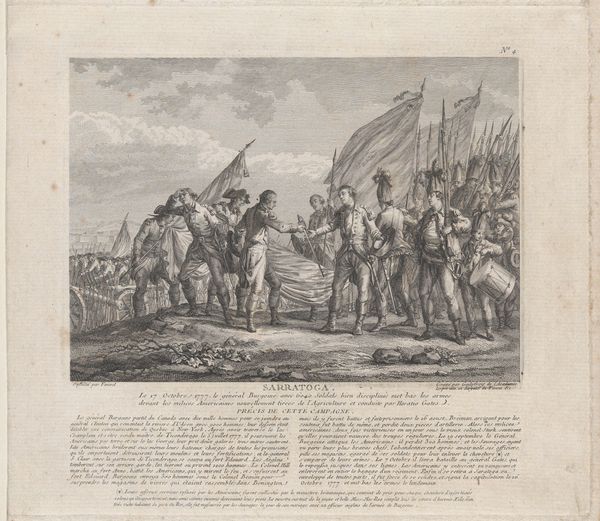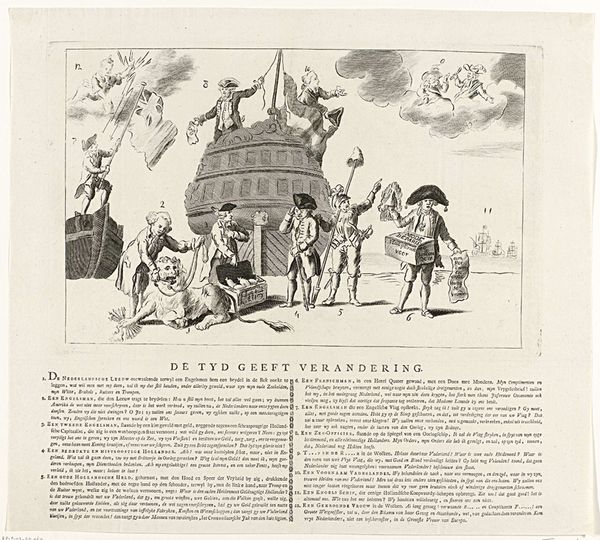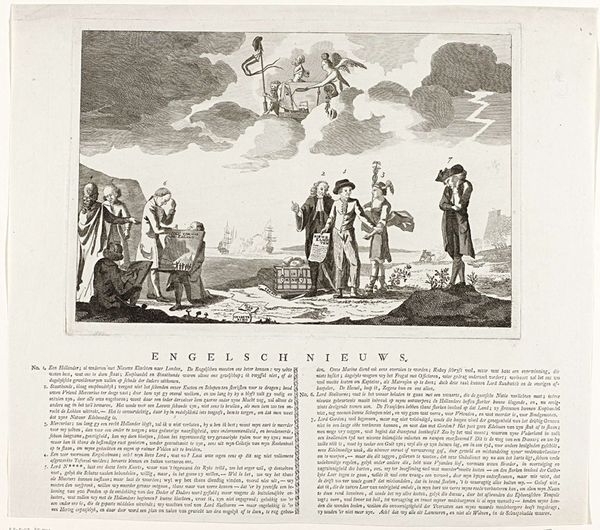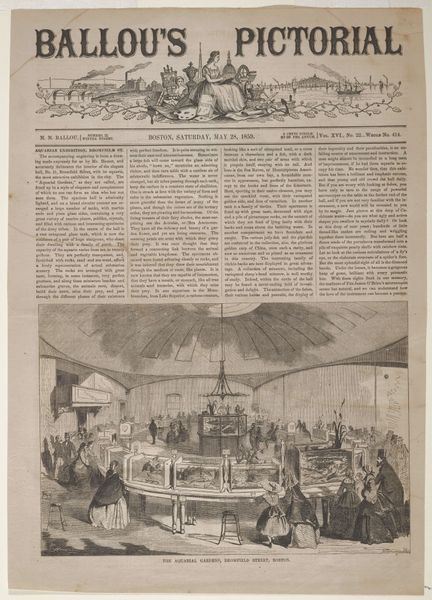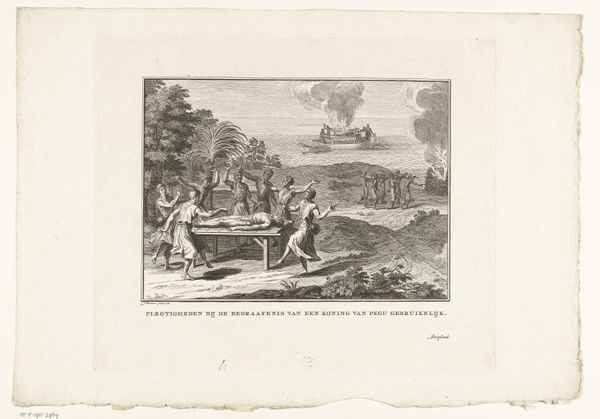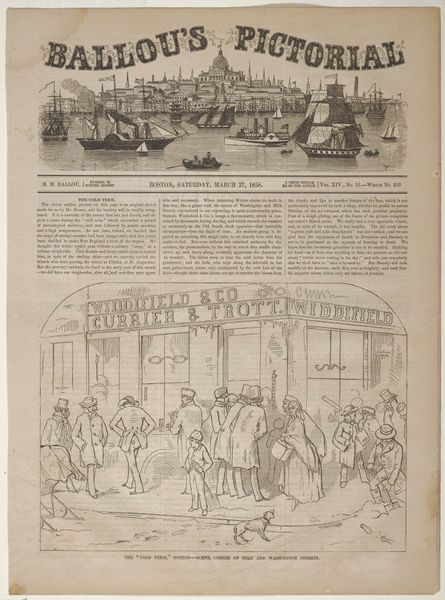
Spotprent op de patriotten bij de eerste verjaardag van hun nederlaag, 1788 1788
0:00
0:00
anonymous
Rijksmuseum
graphic-art, print, etching, engraving
#
graphic-art
#
dutch-golden-age
# print
#
etching
#
caricature
#
old engraving style
#
history-painting
#
engraving
Dimensions: height 448 mm, width 342 mm
Copyright: Rijks Museum: Open Domain
Curator: This engraving, currently residing in the Rijksmuseum, is titled "Spotprent op de patriotten bij de eerste verjaardag van hun nederlaag, 1788," or, loosely translated, "Satirical print on the patriots at the first anniversary of their defeat, 1788". Created anonymously, it provides a fascinating glimpse into the political climate of the Dutch Golden Age. Editor: Oh, my! My first thought is, "What a delightfully chaotic scene!" There's so much motion. It looks like something is falling apart in the sky, right? And you have people looking gleeful down below? Curator: Precisely! The print depicts the downfall of the Patriots, a political faction, using the imagery of Phaeton's fall from Greek mythology. You see Phaeton in his chariot tumbling from the sky... Editor: ...Pulled by, are those donkeys? It’s quite humiliating, isn’t it? The poor Patriot leadership replaced with stubbon and rather slow beasts of burden. Curator: A powerful symbol of their perceived incompetence. The tower crumbling behind Phaeton symbolizes the failing cities that supported the Patriot cause like Amsterdam, with figures tumbling out. Note the group on the left expressing jubilation. Editor: Their joy is palpable, practically jumping off the page. They're almost dancing! You get this distinct impression of celebration, of relief from what seems to have been a turbulent political time. It makes me want to know exactly what had them so excited! Curator: That gets at a crucial function of such political prints. As tools of propaganda, engravings like this would bolster the support of those aligned with the winning side while aiming to publicly ridicule political opponents. The caricatured style does a wonderful job conveying that sense of mockery. Editor: I find it interesting how they've blended classical mythology with contemporary political commentary. The past and present crashing together. Is that the essence of satire, or what? Curator: Indeed, it highlights a very self-aware historical understanding of the conflict. By drawing parallels to the well-known myth of Phaeton, the engraver imbues the political struggle with deeper meaning, suggesting its profound consequences and also a sort of pre-ordained justice. Editor: Seeing how effectively they used art for political messaging makes you think about how little the fundamentals have actually changed. We're just trading etchings for memes these days. It definitely enriches the experience knowing some of the history! Curator: Absolutely! Reflecting on this print, it really underscores the vital role that visual culture plays in shaping our understanding of historical events and power dynamics. Thank you for exploring that with me.
Comments
No comments
Be the first to comment and join the conversation on the ultimate creative platform.
